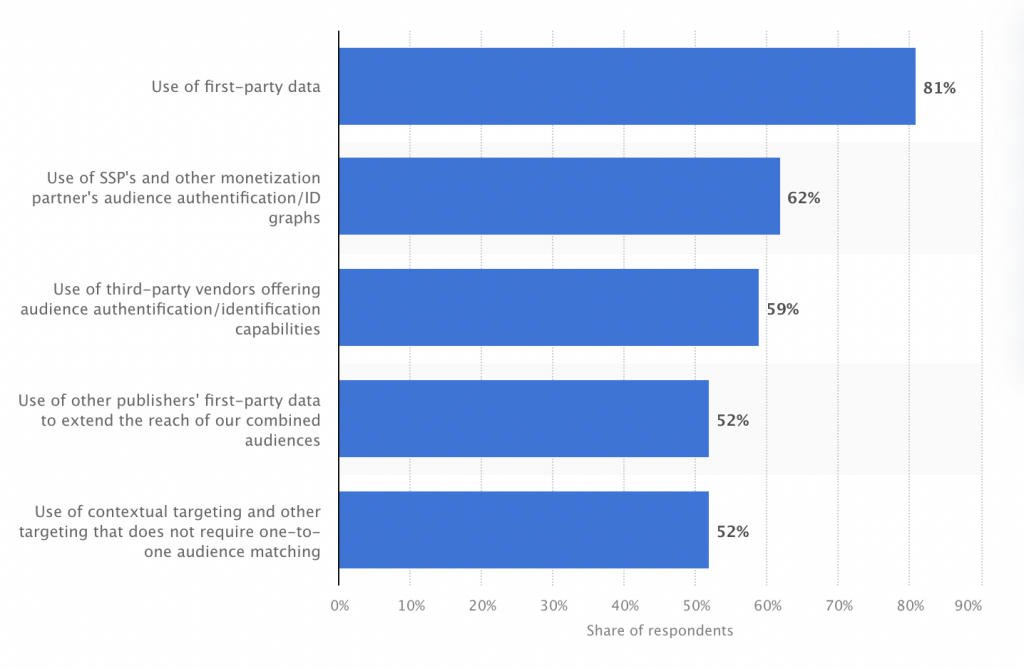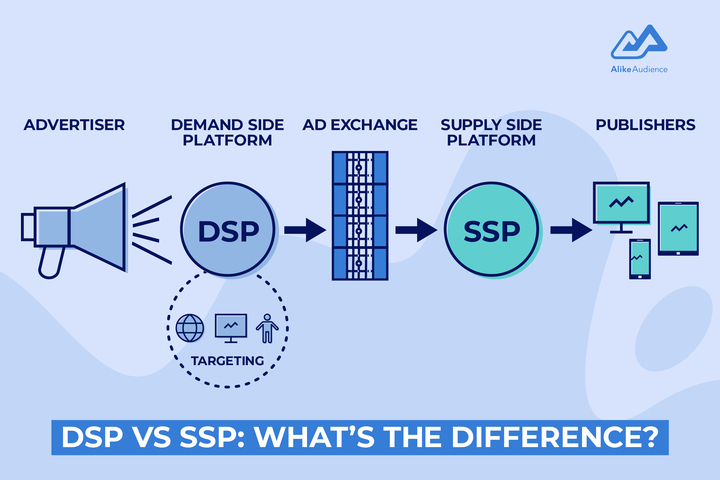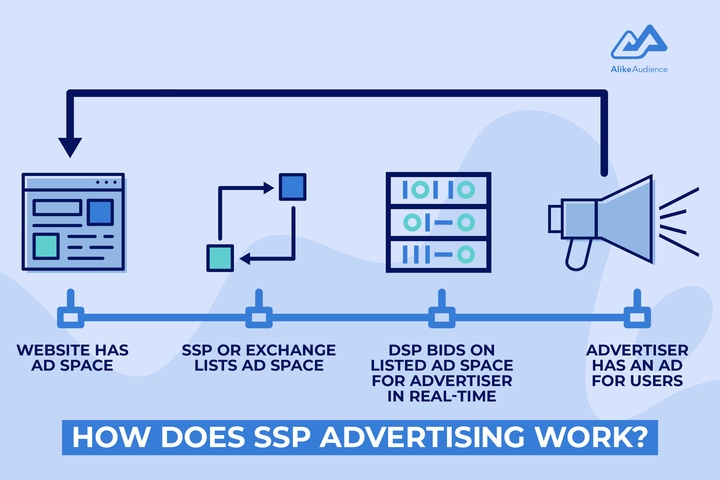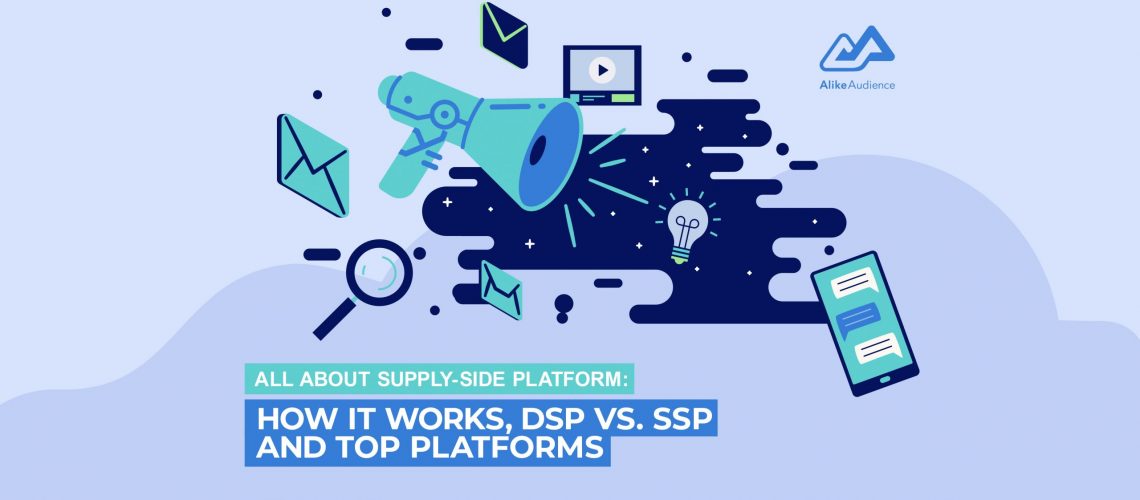Ever since the first ad was displayed in 1994, supply-side platforms (SSPs) has played a pivotal role in serving as the supply chain of the future for many marketers.
In a 2021 survey carried out among U.S. publishers, 62 percent of respondents were found to have used SSPs and other monetization partners’ audience authentication or ID graphs.
Data compiled in another 2021 survey indicated that an average of 5.4 SSPs were used among U.S. publishers. Though that figure has decreased, it’s projected to climb to around 5.8 platforms by the end of 2022.

According to the APAC Director of a prominent SSP company in the market, one of the ongoing challenges facing the programmatic advertising industry today is the lack of understanding of what a supply-side platform actually does, and the value it brings to digital marketers.
In this article, we explain what supply-side platforms are, and how they benefit marketers in boosting ROI and engaging with their target audiences.
What is a supply-side platform (SSP) and how does it boost ROI?

A supply-side platform (SSP) is an advertising technology used by ad publishers to sell advertisements in an automated way. This allows marketers to buy video, display, and mobile ad spaces across multiple channels and devices.
“The main proposition of a supply-side platform is to help publishers monetize and maximize the yield of their inventory. SSPs can also facilitate and open up new opportunities between marketers and publishers,” the Director says.
SSPs enable marketers to boost ROI by engaging their target audiences in brand-safe, premium environments across multiple ad formats and devices.
They also help online publishers drive ROI by selling ad impressions to a specific audience at the most reasonable price, generating higher yields due to the greater pool of potential media buyers as a result.
SSPs also coordinate and manage the supply and distribution of ad inventories, collecting third-party data about web page viewers like demographic, psychographic, and behavioral segmentation to submit to online publishers’ ad spaces on ad exchange.
“It’s important for marketers to stay educated on the value SSPs bring to what they need to do. They should also understand that, like everything, not all SSPs are the same,” the Director explains. “I think there’s this idea that it’s just like a paintbrush stroke – that everybody’s the same. The most dangerous myth is that an SSP is simply a kind of a reseller of media, which they aren’t.”
As an essential component of the programmatic ad-buying ecosystem, SSPs transfer relevant insightful data points to digital marketers for better optimization and performance, resulting in better ROI.
By selling ads in real-time, SSPs provide digital marketers with better, high-quality visibility into individual ad impressions, ensuring publishers sell their ad inventory to you at the most optimal price point and leverage it to the fullest extent possible.
But are SSPs the same as demand-side platforms, where marketers go to bid on ad spaces? Let’s find out.
DSP vs SSP: What’s the difference?

Both demand-side platforms (DSPs) and supply-side platforms (SSPs) are key components making up the programmatic advertising ecosystem. Here are the main differences between them:
- SSPs are designed by online publishers to help maximize the yield of their inventory. They are reverse versions of DSPs created for publishers, connecting publishers to numerous DSPs.
- DSPs do the opposite, as digital marketers typically use them to buy ad impressions from exchanges in the programmatic advertising environment as cheaply, quickly, and efficiently as possible.
So, how do supply-side platforms work exactly? Read on to find out.
How does SSP advertising work?

Like DSPs, supply-side platforms play a crucial role in the process of real-time bidding (RTB). To understand how SSP advertising works, we need to look at what real-time bidding (RTB) is.
As a type of programmatic buying model, RTB allows marketers to run automated online campaigns with predefined ad values, namely through attributes of audience segmentation like demographics, psychographics, and purchase intention. It’s a relatively new feature that also allows publishers to open up to as many potential buyers as possible via ad exchanges.
RTB is a fully automatic and effective advertising model that works instantly after setting up the campaign’s parameters. It connects the entire programmatic ecosystem, including SSPs.
After ad owners submit their webpage to their chosen SSP, the SSP will automatically gain access to their ad units. The SSP then issues ad requests to various demand-side platforms and ad exchanges every time a user visits the website.
During the RTB process, marketers bid on publishers’ ad spaces on demand-side platforms and propose different prices. SSPs, in turn, consider ad unit settings and advertiser’s audience requirements prior to matching the highest bid price.
SSP advertising allows publishers to filter out ads displayed on the webpage, as well as set a low rate for ad space to define the lowest cost of that place. Through RTB, SSPs gather a network of publishers and help them increase their profit by selling ad inventory in an automated fashion.
What are the top supply-side platforms companies in the market today?

Not all SSPs are created equal, and every marketplace is different.
“This is a crucial concept to keep in mind when measuring your campaign performances,” the Director says. “Digital marketers should work to deepen their understanding of what each SSP does in terms of their technical capabilities, as well as the level of transparency of data they provide.”
As programmatic advertising grew, supply-path optimization (SPO) has become a major focus for many marketers. SPO is the process of simplifying the supply chain between advertisers and publishers by cutting out unnecessary intermediaries.
As a result, many ad tech companies have started to offer ad networks and/or ad exchanges in addition to supply-side platforms, reducing intermediaries and consolidating the programmatic media buying process. Now, marketers can focus on building mutually beneficial relationships with only a handful of partners who are equally invested in increasing ROI for them.
With this in mind, we compiled the top three SSP companies to look out for in the digital marketing world, and how they can drive efficiency and ease for launching programmatic ad campaigns.
PubMatic
PubMatic, a leading SSP of choice for publishers and advertisers, offers private marketplaces and auction package capabilities to facilitate increased control over ad inventory sales across all platforms including CTV.
AlikeAudience earlier this month announced its partnership with PubMatic in Australia, Japan, and Indonesia, also enables advertisers to access quality audience data on the supply side. This partnership aims to reduce complexity and increase efficiency and value for marketers and data owners in the programmatic industry through higher match rates and better CPMs.
OpenX
OpenX Software is a programmatic advertising technology company where online publishers can monetize content via connections with leading advertisers and ad exchanges that are the highest-yielding. Ad developers and premium publishers on OpenX earn ad revenue from their content using scalable solutions powered by a high-yielding, global advertising marketplace.
OpenX also operates its own ad exchange, which is another example of how SSP companies have started to blur the lines of the value chain and drive more efficiency for marketers.
Magnite
Magnite came about following the 2020 merger of online advertising technology companies Rubicon Project and Telaria, a deal the two companies said would create the largest independent SSP.
Other SSP companies
Many SSP providers offer solutions for a specific market or an ad type. Let’s look at some of them:
- GumGum: a contextual intelligence company delivering creative advertising campaigns in rich media like images and videos.
- Teads: end-to-end video advertising marketplace specializing in video ad inventory.
- Google Ad Manager: a widely-used platform that allows advertisers to increase competition for ads by managing ads across multiple ad networks using Google-owned proprietary inventory.
- Verizon Media: a digital advertising company now owned by Yahoo! offering global brands native, programmatic, and display ad buying, leveraging on Yahoo-owned proprietary inventory.
- Criteo: a commerce media platform for the open internet that has evolved from retargeting to retail media.
Conclusion
As programmatic advertising rises in popularity, the number of consumer touch points is also expanding. It’s interesting to witness how supply-side platforms will evolve to accommodate these touch points in the coming future.
In this article, we covered the key functions, value, and role SSPs play in the programmatic ad-buying process, as well as how they can help digital marketers boost ROI to better engage with their target audiences.
AlikeAudience supplies publishers with high-quality, high-performing audience segmentation and insights for programmatic advertising campaigns, as well as accurate and comprehensive audience targeting solutions for marketers to help reach millions of your best customers. Find AlikeAudience’s audience segments on the demand-side platform of your choice.
Contact our data strategist today or sign up for our newsletter for more insights.


